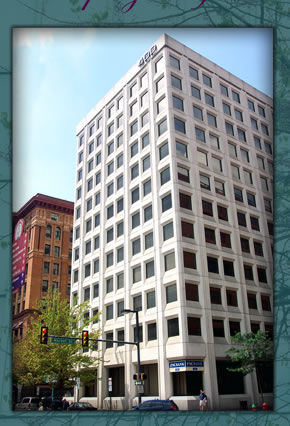
Features
Business intelligence
Contracting
Year-long study shows new window retrofit cut energy use by 50 per cent
April 30, 2013 By Berkowitz
 May 1, 2013 – The Renovate by Berkowitz window retrofitting system has enabled 400 Market Street, a 12-storey building in Philadelphia, to reduce energy consumption in perimeter offices by over 50 per cent, according to results from a year-long energy study. According to project manager Thomas Culp, of Birch Point Consulting, the renovated north-facing office saw a 33 per cent reduction in total energy usage and the east-facing office saw a 53 per cent reduction.
May 1, 2013 – The Renovate by Berkowitz window retrofitting system has enabled 400 Market Street, a 12-storey building in Philadelphia, to reduce energy consumption in perimeter offices by over 50 per cent, according to results from a year-long energy study. According to project manager Thomas Culp, of Birch Point Consulting, the renovated north-facing office saw a 33 per cent reduction in total energy usage and the east-facing office saw a 53 per cent reduction.
 May 1,
May 1,
2013 – The Renovate by Berkowitz window retrofitting
system has enabled 400 Market Street, a 12-storey building in Philadelphia, to
reduce energy consumption in perimeter offices by over 50 per cent, according
to results from a year-long energy study.
Built in 1972, the 200,000-square-foot building was retrofitted with the RbB
system in late 2011, converting its original single-pane windows into
triple-pane insulating glass units. As part
of a $1.6 million U.S. Department of Energy-funded study conducted by the NAHB
Research Center and Quanta Technologies, the building was selected as a
real-world case study to demonstrate the ability of low-e retrofit glazing
systems to improve the energy efficiency of older commercial buildings. The
study examined four unoccupied perimeter offices in the building, two facing
east and two facing north. One office in each pair was retrofitted with RbB,
while the other was left untouched.
According to project manager Thomas Culp, of Birch Point Consulting, the
renovated north-facing office saw a 33 per cent reduction in total energy usage
and the east-facing office saw a 53 per cent reduction.
“We are compiling results for the whole building’s performance to compare them
with prior years’ usage, but these results for the building’s perimeter offices
are compelling in both heating and cooling performance,” said Culp.
The DOE estimates that inefficient windows account for as much as 25 per
cent of a typical building’s heating load in cold climates and 50 percent of
the cooling load in warm climates. “After we evaluate all the numbers, we expect
the RbB system to have made a significant improvement to the entire
building’s energy performance,” Culp added.
Culp said he sees great potential for low-e window retrofits, such as the RbB
system.
“There are countless older buildings with single-pane windows that waste a huge
amount of energy,” he explained. “While results will vary from location to
location, 400 Market Street in Philadelphia was an ideal testing environment to
determine both heating and cooling benefits.”
Carolyn Pfeiffer, property manager for Kaiserman Company, the owners of the
building, agreed, saying that 400 Market Street “is representative of many
older commercial buildings, both larger and smaller, across the country. This
is just one of our properties that we have updated with the RbB system
and we are excited by the results. RbB is suited for all weather
conditions as the results from the energy study show, and it’s a cost-effective
alternative to other window replacement scenarios.”
Because the RbB system is a pre-assembled IGU that is installed to
the existing interior window surface, it also has the advantage of being much
faster and less disruptive to install than a traditional rip-out-and-replace
project.
“Our tenants were able to stay in their offices, and we were able to save
the time and costs associated with temporarily relocating them,” Pfeiffer said.
“Tenants also have shared comments about reduced street noise and indoor
comfort, and the maintenance staff has noted reduced cycling times on the
boilers along with the ability to lower hot water set points.”
Related Link
www.jeberkowitz.com
Print this page
Leave a Reply